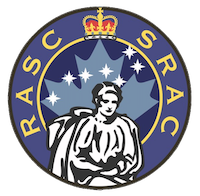Edwin Brant Frost II (July 16, 1866 – May 14, 1935) was an American astronomer.
He was born in Brattleboro, Vermont. His father, Carlton Pennington Frost, was dean of Dartmouth Medical School.
Frost graduated from Dartmouth in 1886. He continued his education as a post-graduate student in chemistry and in 1887 became an instructor in physics while only 21 years old. In 1890 Frost went abroad to Europe and ended up researching stellar spectroscopy under Hermann Vogel in Potsdam. He returned to Dartmouth in 1892 as an assistant professor of astronomy.
He was fond of the outdoors and enjoyed golf, swimming, and ice skating. He also enjoyed music and literature. In 1896 he married Mary E. Hazard. They had three children, Katharine, Frederick, and Benjamin.
Frost joined the staff of Yerkes Observatory in 1898 and became its director in 1905 when George Hale resigned. Frost kept the position until his retirement in 1932. He was the editor of the Astrophysical Journal from 1902 to 1932, known for his careful attention to details. In 1915 he lost the use of his right eye and in 1921, his left. Despite his blindness he continued working for eleven more years until his retirement in 1932.
He died in 1935 in Chicago from peritonitis.
Frost's research focused on the determination of radial velocity using stellar spectroscopy and spectroscopic binaries. In 1902, he discovered the strange behavior of Beta Cephei, which later became the prototype for Beta Cephei variable stars.
He played a significant role in bringing Otto Struvé to the United States, when the latter was living as an impoverished refugee in Turkey after the Russian Revolution. He later supported the appointment of Struve as his successor as director of Yerkes Observatory.
Asteroid 854 Frostia and the lunar crater Frost are named in his honor.
Professor Frost was elected a Corresponding Member of the Royal Astronomical Society of Canada at the Society's annual At-Home at its new offices at 198 College Street on 1906-01-23. He corresponded with the Society in October 1908 concerning Morehouse's Comet. His obituaries for Charles A. Young and also S.W. Burnham, a fellow honorary member, in Science were reprinted in JRASC in 1908 and 1921, respectively.

